LGA-1366 – cpu-infos.net
← LGA-1356
Back to List of Intel Socket Types
LGA-1567 →
| Product Collection |
Code Name |
Processor Number |
# of Cores |
# of Threads |
Base Frequency |
Litho- graphy |
Spec Code |
Step- ping |
Ordering Code |
|---|---|---|---|---|---|---|---|---|---|
| 1st Generation Core i7 | Bloomfield | i7-920 | 4 | 8 | 2.66 GHz | 45 nm | SLBCH | C0 | BX80601920 |
| 1st Generation Core i7 | Bloomfield | i7-920 | 4 | 8 | 2.66 GHz | 45 nm | SLBCH | C0 | AT80601000741AA |
| 1st Generation Core i7 | Bloomfield | i7-920 | 4 | 8 | 2.66 GHz | 45 nm | SLBEJ | D0 | BX80601920 |
| 1st Generation Core i7 | Bloomfield | i7-920 | 4 | 8 | 2. |
45 nm | SLBEJ | D0 | AT80601000741AA |
| 1st Generation Core i7 | Bloomfield | i7-930 | 4 | 8 | 2.80 GHz | 45 nm | SLBKP | D0 | BX80601930 |
| 1st Generation Core i7 | Bloomfield | i7-930 | 4 | 8 | 2.80 GHz | 45 nm | SLBKP | D0 | AT80601000897AA |
| 1st Generation Core i7 | Bloomfield | i7-940 | 4 | 8 | 2.93 GHz | 45 nm | SLBCK | C0 | AT80601000921AA |
| 1st Generation Core i7 | Bloomfield | i7-940 | 4 | 8 | 2.93 GHz | 45 nm | SLBCK | C0 | BX80601940 |
| 1st Generation Core i7 | Bloomfield | i7-950 | 4 | 8 | 3.06 GHz | 45 nm | SLBEN | D0 | BX80601950 |
| 1st Generation Core i7 | Bloomfield | i7-950 | 4 | 8 | 3. 06 GHz 06 GHz |
45 nm | SLBEN | D0 | AT80601002112AA |
| 1st Generation Core i7 | Bloomfield | i7-960 | 4 | 8 | 3.20 GHz | 45 nm | SLBEU | D0 | AT80601002727AA |
| 1st Generation Core i7 | Bloomfield | i7-960 | 4 | 8 | 3.20 GHz | 45 nm | SLBEU | D0 | BX80601960 |
| 1st Generation Core i7 | Bloomfield | i7-965 | 4 | 8 | 3.20 GHz | 45 nm | SLBCJ | C0 | BX80601965 |
| 1st Generation Core i7 | Bloomfield | i7-965 | 4 | 8 | 3.20 GHz | 45 nm | SLBCJ | C0 | AT80601000918AA |
| 1st Generation Core i7 | Bloomfield | i7-975 | 4 | 8 | 3.33 GHz | 45 nm | SLBEQ | D0 | BX80601975 |
| 1st Generation Core i7 | Bloomfield | i7-975 | 4 | 8 | 3. 33 GHz 33 GHz |
45 nm | SLBEQ | D0 | AT80601002274AA |
| Xeon W-Series | Bloomfield | W3520 | 4 | 8 | 2.66 GHz | 45 nm | SLBEW | D0 | AT80601000741AB |
| Xeon W-Series | Bloomfield | W3520 | 4 | 8 | 2.66 GHz | 45 nm | D0 | BX80601W3520 | |
| Xeon W-Series | Bloomfield | W3530 | 4 | 8 | 2.80 GHz | 45 nm | SLBKR | D0 | AT80601000897AB |
| Xeon W-Series | Bloomfield | W3530 | 4 | 8 | 2.80 GHz | 45 nm | SLBKR | D0 | BX80601W3530 |
| Xeon W-Series | Bloomfield | W3540 | 4 | 8 | 2.93 GHz | 45 nm | D0 | BX80601W3540 | |
| Xeon W-Series | Bloomfield | W3540 | 4 | 8 | 2.93 GHz | 45 nm | SLBEX | D0 | AT80601000921AB |
| Xeon W-Series | Bloomfield | W3550 | 4 | 8 | 3.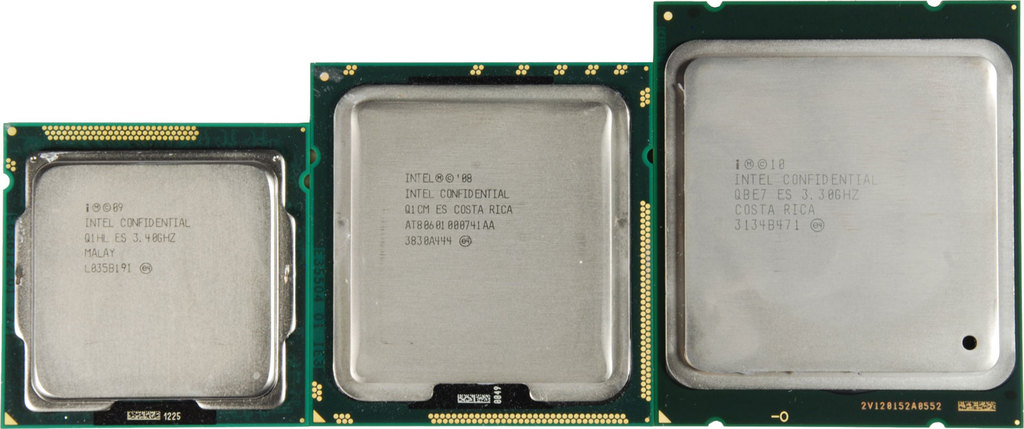 06 GHz 06 GHz |
45 nm | SLBEY | D0 | BX80601W3550 |
| Xeon W-Series | Bloomfield | W3550 | 4 | 8 | 3.06 GHz | 45 nm | SLBEY | D0 | AT80601002112AB |
| Xeon W-Series | Bloomfield | W3565 | 4 | 8 | 3.20 GHz | 45 nm | SLBEV | D0 | BX80601W3565 |
| Xeon W-Series | Bloomfield | W3565 | 4 | 8 | 3.20 GHz | 45 nm | SLBEV | D0 | AT80601002727AB |
| Xeon W-Series | Bloomfield | W3570 | 4 | 8 | 3.20 GHz | 45 nm | D0 | BX80601W3570 | |
| Xeon W-Series | Bloomfield | W3570 | 4 | 8 | 3.20 GHz | 45 nm | SLBES | D0 | AT80601000918AB |
| Xeon W-Series | Bloomfield | W3580 | 4 | 8 | 3.33 GHz | 45 nm | SLBET | D0 | BX80601W3580 |
| Xeon W-Series | Bloomfield | W3580 | 4 | 8 | 3. 33 GHz 33 GHz |
45 nm | SLBET | D0 | AT80601002274AB |
| 1st Generation Core i7 | Gulftown | i7-970 | 6 | 12 | 3.20 GHz | 32 nm | SLBVF | B1 | AT80613005490AD |
| 1st Generation Core i7 | Gulftown | i7-970 | 6 | 12 | 3.20 GHz | 32 nm | SLBVF | B1 | BX80613I7970 |
| 1st Generation Core i7 | Gulftown | i7-980 | 6 | 12 | 3.33 GHz | 32 nm | SLBYU | B1 | AT80613006756AA |
| 1st Generation Core i7 | Gulftown | i7-980 | 6 | 12 | 3.33 GHz | 32 nm | SLBYU | B1 | BX80613I7980 |
| 1st Generation Core i7 | Gulftown | i7-980X | 6 | 12 | 3.33 GHz | 32 nm | SLBUZ | B1 | AT80613003543AE |
| 1st Generation Core i7 | Gulftown | i7-980X | 6 | 12 | 3.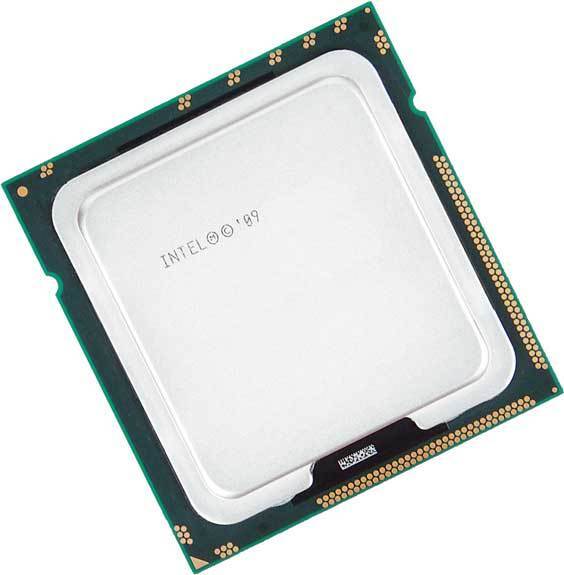 33 GHz 33 GHz |
32 nm | SLBUZ | B1 | BX80613I7980X |
| 1st Generation Core i7 | Gulftown | i7-990X | 6 | 12 | 3.46 GHz | 32 nm | SLBVZ | B1 | BX80613I7990X |
| 1st Generation Core i7 | Gulftown | i7-990X | 6 | 12 | 3.46 GHz | 32 nm | SLBVZ | B1 | AT80613005931AA |
| Xeon W-Series | Gulftown | W3690 | 6 | 12 | 3.46 GHz | 32 nm | SLBW2 | B1 | AT80613005931AB |
| Xeon E-Series | Nehalem EP | E5502 | 2 | 2 | 1.86 GHz | 45 nm | SLBEZ | D0 | BX80602E5502 |
| Xeon E-Series | Nehalem EP | E5502 | 2 | 2 | 1.86 GHz | 45 nm | SLBEZ | D0 | AT80602000804AA |
| Xeon E-Series | Nehalem EP | E5503 | 2 | 2 | 2.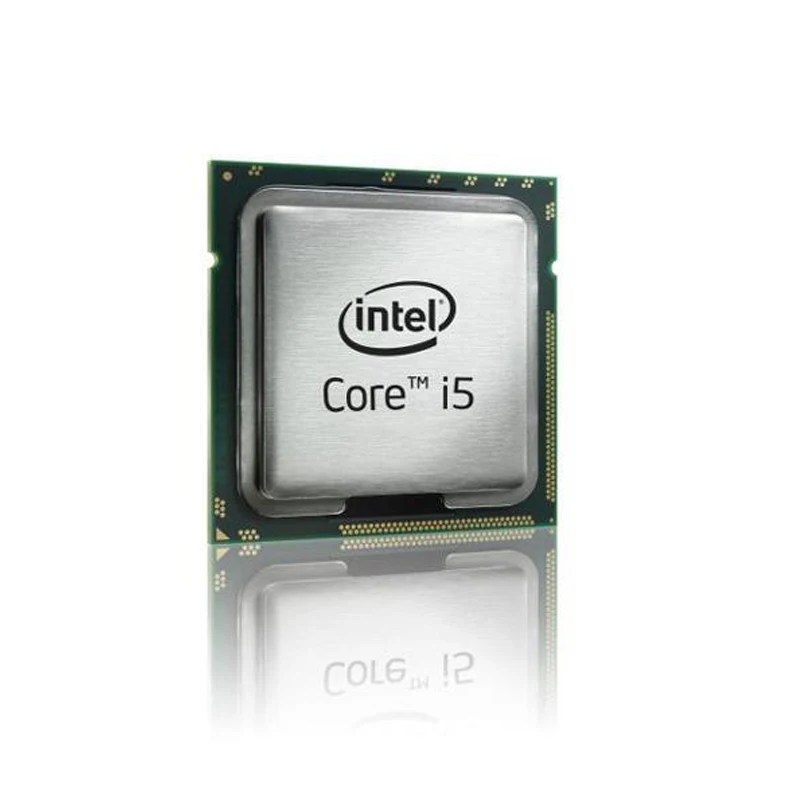 00 GHz 00 GHz |
45 nm | SLBKD | D0 | BX80602E5503 |
| Xeon E-Series | Nehalem EP | E5503 | 2 | 2 | 2.00 GHz | 45 nm | SLBKD | D0 | AT80602003636AA |
| Xeon E-Series | Nehalem EP | E5504 | 4 | 4 | 2.00 GHz | 45 nm | SLBF9 | D0 | AT80602000801AA |
| Xeon E-Series | Nehalem EP | E5504 | 4 | 4 | 2.00 GHz | 45 nm | SLBF9 | D0 | BX80602E5504 |
| Xeon E-Series | Nehalem EP | E5506 | 4 | 4 | 2.13 GHz | 45 nm | SLBF8 | D0 | AT80602000798AA |
| Xeon E-Series | Nehalem EP | E5506 | 4 | 4 | 2.13 GHz | 45 nm | SLBF8 | D0 | BX80602E5506 |
| Xeon E-Series | Nehalem EP | E5507 | 4 | 4 | 2.26 GHz | 45 nm | SLBKC | D0 | AT80602000795AA |
| Xeon E-Series | Nehalem EP | E5507 | 4 | 4 | 2. 26 GHz 26 GHz |
45 nm | SLBKC | D0 | BX80602E5507 |
| Xeon E-Series | Nehalem EP | E5520 | 4 | 8 | 2.26 GHz | 45 nm | SLBFD | D0 | AT80602002091AA |
| Xeon E-Series | Nehalem EP | E5520 | 4 | 8 | 2.26 GHz | 45 nm | SLBFD | D0 | BX80602E5520 |
| Xeon E-Series | Nehalem EP | E5530 | 4 | 8 | 2.40 GHz | 45 nm | SLBF7 | D0 | BX80602E5530 |
| Xeon E-Series | Nehalem EP | E5530 | 4 | 8 | 2.40 GHz | 45 nm | SLBF7 | D0 | AT80602000792AA |
| Xeon E-Series | Nehalem EP | E5540 | 4 | 8 | 2.53 GHz | 45 nm | SLBF6 | D0 | AT80602000789AA |
| Xeon E-Series | Nehalem EP | E5540 | 4 | 8 | 2.53 GHz | 45 nm | SLBF6 | D0 | BX80602E5540 |
| Xeon L-Series | Nehalem EP | L5506 | 4 | 4 | 2. 13 GHz 13 GHz |
45 nm | SLBFH | D0 | AT80602002712AA |
| Xeon L-Series | Nehalem EP | L5506 | 4 | 4 | 2.13 GHz | 45 nm | SLBFH | D0 | BX80602L5506 |
| Xeon L-Series | Nehalem EP | L5508 | 2 | 4 | 2.00 GHz | 45 nm | SLBGK | D0 | AT80602002697AC |
| Xeon L-Series | Nehalem EP | L5518 | 4 | 8 | 2.13 GHz | 45 nm | SLBFW | D0 | AT80602002265AB |
| Xeon L-Series | Nehalem EP | L5520 | 4 | 8 | 2.26 GHz | 45 nm | SLBFA | D0 | BX80602L5520 |
| Xeon L-Series | Nehalem EP | L5520 | 4 | 8 | 2.26 GHz | 45 nm | SLBFA | D0 | AT80602000810AA |
| Xeon L-Series | Nehalem EP | L5530 | 4 | 8 | 2.40 GHz | 45 nm | SLBGF | D0 | BX80602L5530 |
| Xeon L-Series | Nehalem EP | L5530 | 4 | 8 | 2. 40 GHz 40 GHz |
45 nm | SLBGF | D0 | AT80602002937AB |
| Xeon W-Series | Nehalem EP | W5580 | 4 | 8 | 3.20 GHz | 45 nm | SLBF2 | D0 | BX80602W5580 |
| Xeon W-Series | Nehalem EP | W5580 | 4 | 8 | 3.20 GHz | 45 nm | SLBF2 | D0 | AT80602000756AD |
| Xeon W-Series | Nehalem EP | W5590 | 4 | 8 | 3.33 GHz | 45 nm | SLBGE | D0 | BX80602W5590 |
| Xeon W-Series | Nehalem EP | W5590 | 4 | 8 | 3.33 GHz | 45 nm | SLBGE | D0 | AT80602000753AA |
| Xeon X-Series | Nehalem EP | X5550 | 4 | 8 | 2.66 GHz | 45 nm | SLBF5 | D0 | BX80602X5550 |
| Xeon X-Series | Nehalem EP | X5550 | 4 | 8 | 2.66 GHz | 45 nm | SLBF5 | D0 | AT80602000771AA |
| Xeon X-Series | Nehalem EP | X5560 | 4 | 8 | 2.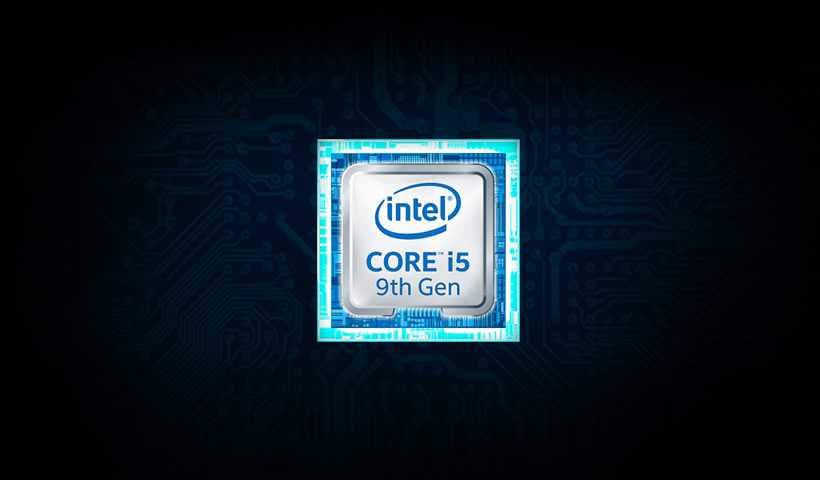 80 GHz 80 GHz |
45 nm | SLBF4 | D0 | BX80602X5560 |
| Xeon X-Series | Nehalem EP | X5560 | 4 | 8 | 2.80 GHz | 45 nm | SLBF4 | D0 | AT80602000768AA |
| Xeon X-Series | Nehalem EP | X5570 | 4 | 8 | 2.93 GHz | 45 nm | SLBF3 | D0 | AT80602000765AA |
| Xeon X-Series | Nehalem EP | X5570 | 4 | 8 | 2.93 GHz | 45 nm | SLBF3 | D0 | BX80602X5570 |
| Xeon E-Series | Westmere EP | E5603 | 4 | 4 | 1.60 GHz | 32 nm | SLC2F | B1 | AT80614006954AA |
| Xeon E-Series | Westmere EP | E5603 | 4 | 4 | 1.60 GHz | 32 nm | SLC2F | B1 | BX80614E5603 |
| Xeon E-Series | Westmere EP | E5606 | 4 | 4 | 2.13 GHz | 32 nm | SLC2N | B1 | BX80614E5606 |
| Xeon E-Series | Westmere EP | E5606 | 4 | 4 | 2. 13 GHz 13 GHz |
32 nm | SLC2N | B1 | AT80614007290AE |
| Xeon E-Series | Westmere EP | E5607 | 4 | 4 | 2.26 GHz | 32 nm | SLBZ9 | B1 | AT80614006789AA |
| Xeon E-Series | Westmere EP | E5607 | 4 | 4 | 2.26 GHz | 32 nm | SLBZ9 | B1 | BX80614E5607 |
| Xeon E-Series | Westmere EP | E5620 | 4 | 8 | 2.40 GHz | 32 nm | SLBV4 | B1 | BX80614E5620 |
| Xeon E-Series | Westmere EP | E5620 | 4 | 8 | 2.40 GHz | 32 nm | SLBV4 | B1 | AT80614005073AB |
| Xeon E-Series | Westmere EP | E5630 | 4 | 8 | 2.53 GHz | 32 nm | SLBVB | B1 | AT80614005463AA |
| Xeon E-Series | Westmere EP | E5630 | 4 | 8 | 2.53 GHz | 32 nm | SLBVB | B1 | BX80614E5630 |
| Xeon E-Series | Westmere EP | E5640 | 4 | 8 | 2.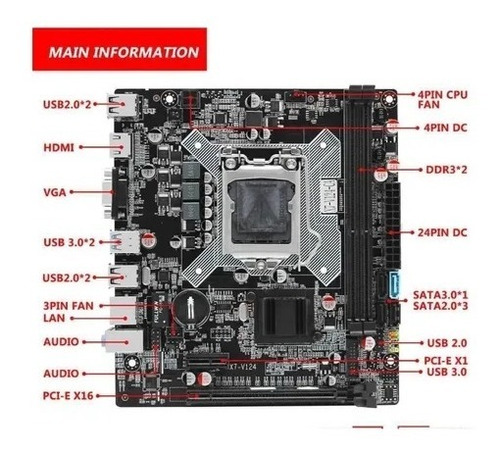 66 GHz 66 GHz |
32 nm | SLBVC | B1 | BX80614E5640 |
| Xeon E-Series | Westmere EP | E5640 | 4 | 8 | 2.66 GHz | 32 nm | SLBVC | B1 | AT80614005466AA |
| Xeon E-Series | Westmere EP | E5645 | 6 | 12 | 2.40 GHz | 32 nm | SLBWZ | B1 | AT80614003597AC |
| Xeon E-Series | Westmere EP | E5645 | 6 | 12 | 2.40 GHz | 32 nm | SLBWZ | B1 | BX80614E5645 |
| Xeon E-Series | Westmere EP | E5649 | 6 | 12 | 2.53 GHz | 32 nm | SLBZ8 | B1 | AT80614006783AB |
| Xeon E-Series | Westmere EP | E5649 | 6 | 12 | 2.53 GHz | 32 nm | SLBZ8 | B1 | BX80614E5649 |
| Xeon L-Series | Westmere EP | L5609 | 4 | 4 | 1.86 GHz | 32 nm | SLBVJ | B1 | AT80614005940AA |
| Xeon L-Series | Westmere EP | L5618 | 4 | 8 | 1.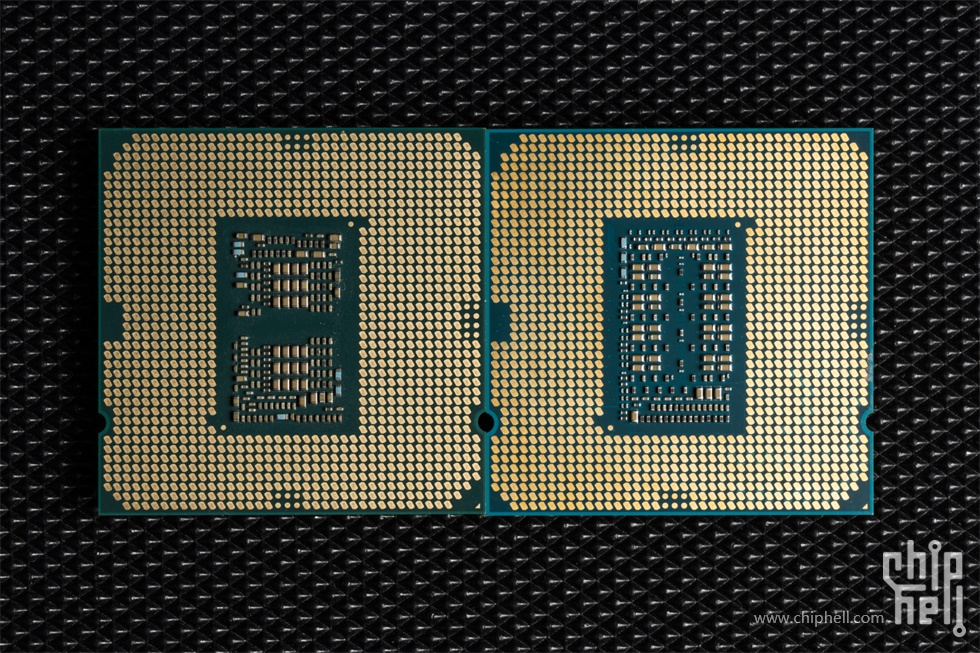 87 GHz 87 GHz |
32 nm | SLBX3 | B1 | AT80614005079AB |
| Xeon L-Series | Westmere EP | L5630 | 4 | 8 | 2.13 GHz | 32 nm | SLBVD | B1 | AT80614005484AA |
| Xeon L-Series | Westmere EP | L5630 | 4 | 8 | 2.13 GHz | 32 nm | SLBVD | B1 | BX80614L5630 |
| Xeon L-Series | Westmere EP | L5638 | 6 | 12 | 2.00 GHz | 32 nm | SLBWY | B1 | AT80614003591AB |
| Xeon L-Series | Westmere EP | L5640 | 6 | 12 | 2.26 GHz | 32 nm | SLBV8 | B1 | AT80614005133AB |
| Xeon L-Series | Westmere EP | L5640 | 6 | 12 | 2.26 GHz | 32 nm | SLBV8 | B1 | BX80614L5640 |
| Xeon W-Series | Westmere EP | W3670 | 6 | 12 | 3.20 GHz | 32 nm | SLBVE | B1 | AT80613005490AC |
| Xeon W-Series | Westmere EP | W3670 | 6 | 12 | 3.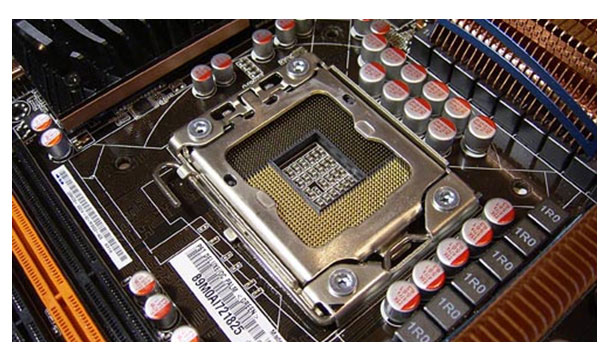 20 GHz 20 GHz |
32 nm | SLBVE | B1 | BX80613W3670 |
| Xeon W-Series | Westmere EP | W3680 | 6 | 12 | 3.33 GHz | 32 nm | SLBV2 | B1 | AT80613003543AF |
| Xeon W-Series | Westmere EP | W3680 | 6 | 12 | 3.33 GHz | 32 nm | SLBV2 | B1 | BX80613W3680 |
| Xeon X-Series | Westmere EP | X5647 | 4 | 8 | 2.93 GHz | 32 nm | SLBZ7 | B1 | AT80614006780AA |
| Xeon X-Series | Westmere EP | X5650 | 6 | 12 | 2.66 GHz | 32 nm | SLBV3 | B1 | BX80614X5650 |
| Xeon X-Series | Westmere EP | X5650 | 6 | 12 | 2.66 GHz | 32 nm | SLBV3 | B1 | AT80614004320AD |
| Xeon X-Series | Westmere EP | X5660 | 6 | 12 | 2.80 GHz | 32 nm | SLBV6 | B1 | AT80614005127AA |
| Xeon X-Series | Westmere EP | X5660 | 6 | 12 | 2.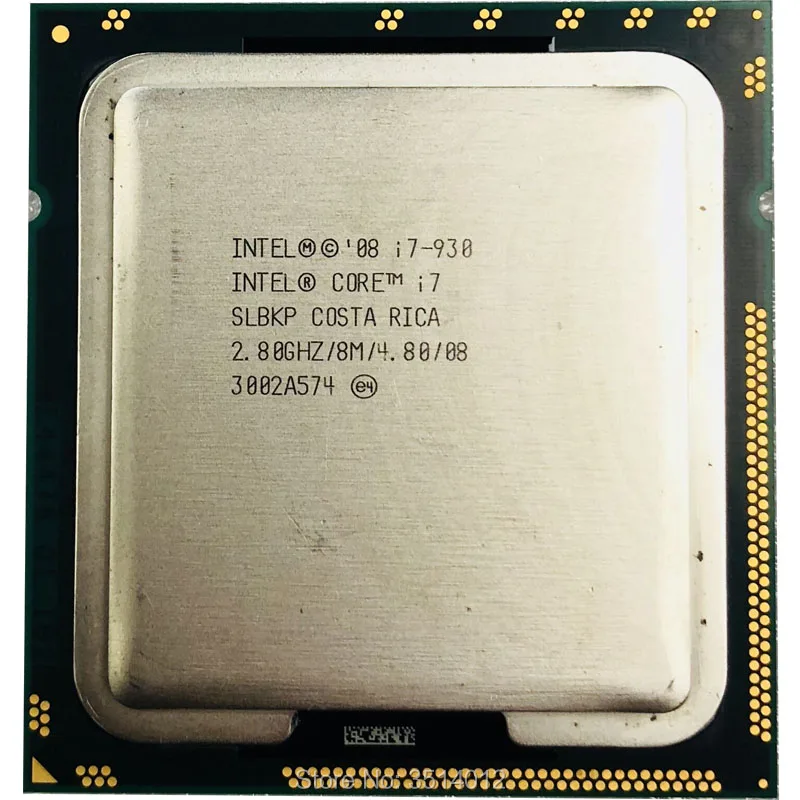 80 GHz 80 GHz |
32 nm | SLBV6 | B1 | BX80614X5660 |
| Xeon X-Series | Westmere EP | X5667 | 4 | 8 | 3.06 GHz | 32 nm | SLBVA | B1 | AT80614005154AB |
| Xeon X-Series | Westmere EP | X5670 | 6 | 12 | 2.93 GHz | 32 nm | SLBV7 | B1 | BX80614X5670 |
| Xeon X-Series | Westmere EP | X5670 | 6 | 12 | 2.93 GHz | 32 nm | SLBV7 | B1 | AT80614005130AA |
| Xeon X-Series | Westmere EP | X5672 | 4 | 8 | 3.20 GHz | 32 nm | SLBYK | B1 | AT80614005922AA |
| Xeon X-Series | Westmere EP | X5675 | 6 | 12 | 3.06 GHz | 32 nm | SLBYL | B1 | BX80614X5675 |
| Xeon X-Series | Westmere EP | X5675 | 6 | 12 | 3.06 GHz | 32 nm | SLBYL | B1 | AT80614006696AA |
| Xeon X-Series | Westmere EP | X5677 | 4 | 8 | 3.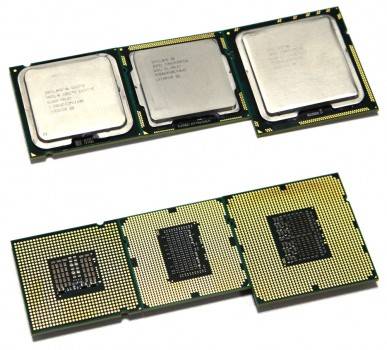 46 GHz 46 GHz |
32 nm | SLBV9 | B1 | AT80614005145AB |
| Xeon X-Series | Westmere EP | X5680 | 6 | 12 | 3.33 GHz | 32 nm | SLBV5 | B1 | BX80614X5680 |
| Xeon X-Series | Westmere EP | X5680 | 6 | 12 | 3.33 GHz | 32 nm | SLBV5 | B1 | AT80614005124AA |
| Xeon X-Series | Westmere EP | X5687 | 4 | 8 | 3.60 GHz | 32 nm | SLBVY | B1 | AT80614005919AB |
| Xeon X-Series | Westmere EP | X5690 | 6 | 12 | 3.46 GHz | 32 nm | SLBVX | B1 | BX80614X5690 |
| Xeon X-Series | Westmere EP | X5690 | 6 | 12 | 3.46 GHz | 32 nm | SLBVX | B1 | AT80614005913AB |
| Celeron P-Series | Jasper Forest | P1053 | 1 | 2 | 1.33 GHz | 45 nm | SLBWN | B0 | AT80612004743AA |
| Xeon E-Series | Jasper Forest | EC3539 | 4 | 4 | 2.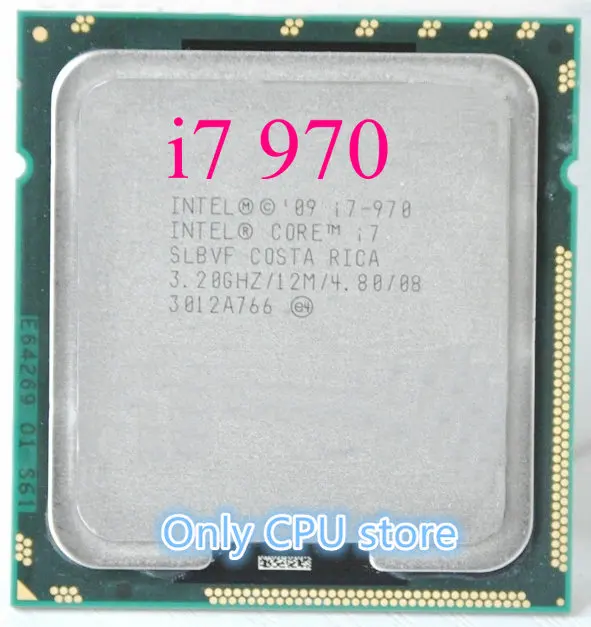 13 GHz 13 GHz |
45 nm | SLBWJ | B0 | AT80612003090AA |
| Xeon E-Series | Jasper Forest | EC5509 | 4 | 4 | 2.00 GHz | 45 nm | SLBWM | B0 | AT80612004740AA |
| Xeon E-Series | Jasper Forest | EC5539 | 2 | 2 | 2.27 GHz | 45 nm | SLBWL | B0 | AT80612003861AB |
| Xeon E-Series | Jasper Forest | EC5549 | 4 | 8 | 2.53 GHz | 45 nm | SLBWP | B0 | AT80612005712AB |
| Xeon L-Series | Jasper Forest | LC3518 | 1 | 1 | 1.73 GHz | 45 nm | SLBWH | B0 | AT80612002946AA |
| Xeon L-Series | Jasper Forest | LC3528 | 2 | 4 | 1.73 GHz | 45 nm | SLBWG | B0 | AT80612002931AB |
| Xeon L-Series | Jasper Forest | LC5518 | 4 | 8 | 1. 73 GHz 73 GHz |
45 nm | SLBWF | B0 | AT80612002928AC |
| Xeon L-Series | Jasper Forest | LC5528 | 4 | 8 | 2.13 GHz | 45 nm | SLBWK | B0 | AT80612003858AA |
ASRock > CPU Support List
ASRock > CPU Support List
Motherboards
Graphics Card
Gaming Monitor
Mini PC
Industrial PC
Server/WS
AMD 2022 Q4 GBundle
ASRock 20th Anniversary
ASRock x Intel
Embrace the Future
We use cookies to offer you a more personalized and smoother experience.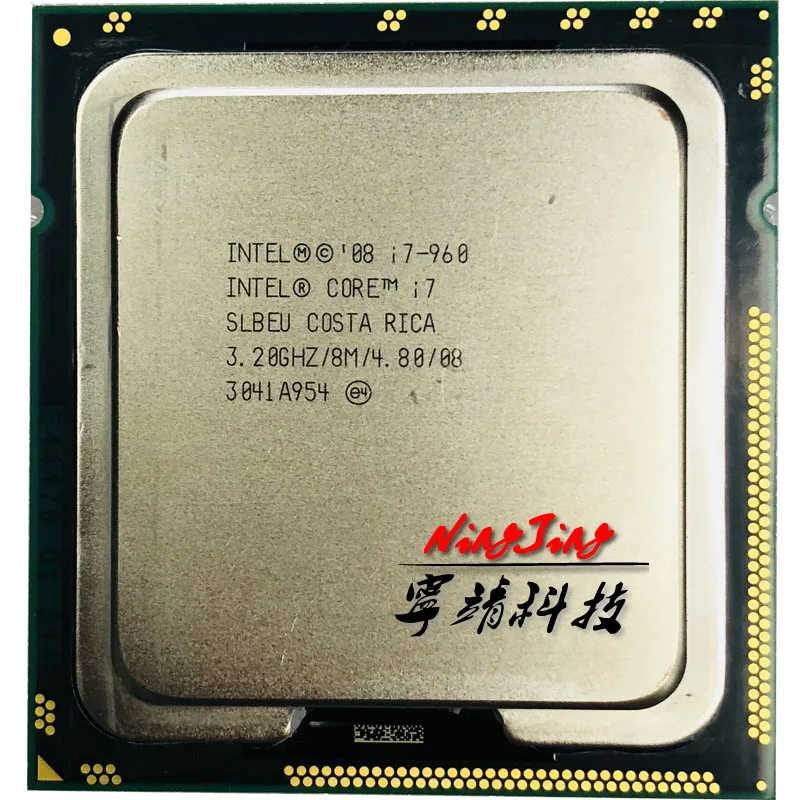 By visiting this website, you agree to our use of cookies. If you prefer not to accept cookies or require more information, please visit our Privacy Policy.
By visiting this website, you agree to our use of cookies. If you prefer not to accept cookies or require more information, please visit our Privacy Policy.
| Family | Number | Core | Frequency | QPI | Cache | Support List |
|---|---|---|---|---|---|---|
| Xeon | X5670(B0) | Westmere | 2.93GHz | 6.4GT/s | 12MB | List |
| Xeon | X5650(B1) | Westmere | 2.66GHz | 6.4GT/s | 12MB | List |
| Xeon | W5590(D0) | Nehalem | 3.33GHz | 6.4GT/s | 8MB | List |
| Xeon | W5580(D0) | Nehalem | 3.2GHz | 6.4GT/s | 8MB | List |
| Xeon | X5570(D0) | Nehalem | 2.93GHz | 6.4GT/s | 8MB | List |
| Xeon | X5560(D0) | Nehalem | 2.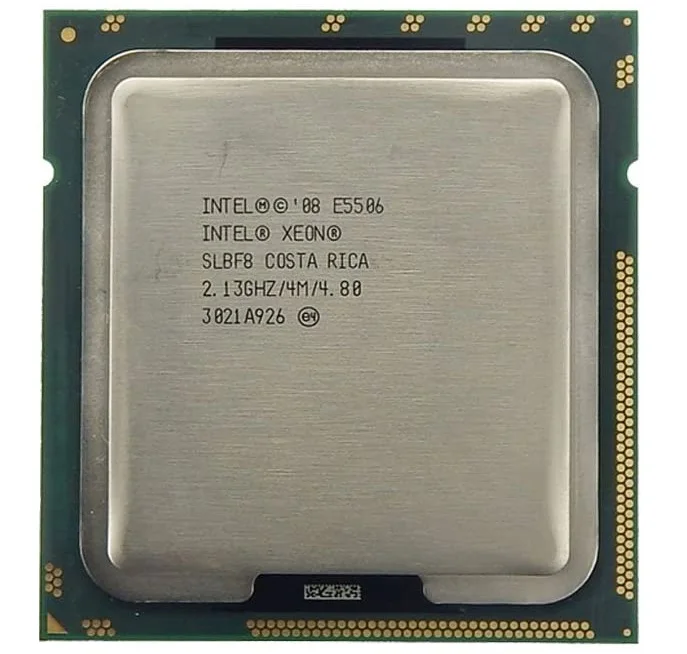 8GHz 8GHz |
6.4GT/s | 8MB | List |
| Xeon | X5550(D0) | Nehalem | 2.66GHz | 6.4GT/s | 8MB | List |
| Xeon | W3690(B1) | Westmere | 3.46GHz | 6.4GT/s | 12MB | List |
| Xeon | W3680(B1) | Gulftown | 3.33GHz | 6.4GT/s | 12MB | List |
| Xeon | W3670(B1) | Westmere | 3.20GHz | 4.8GT/s | 12MB | List |
| Xeon | W3580(D0) | Nehalem | 3.33GHz | 6.4GT/s | 8MB | List |
| Xeon | W3570(D0) | Nehalem | 3.2GHz | 6.4GT/s | 8MB | List |
| Xeon | W3540(D0) | Nehalem | 2.93GHz | 4.8GT/s | 8MB | List |
| Xeon | W3530(D0) | Nehalem | 2. 80GHz 80GHz |
4.8GT/s | 8MB | List |
| Xeon | W3520(D0) | Nehalem | 2.66GHz | 4.8GT/s | 8MB | List |
| Xeon | E5620(B1) | Nehalem | 2.40GHz | 5.86GT/s | 12MB | List |
| Xeon | E5506(D0) | Nehalem | 2.13GHz | 4.8GT/s | 4MB | List |
| Xeon | E5504(D0) | Nehalem | 2.0GHz | 4.8GT/s | 4MB | List |
| Xeon | E5502(D0) | Nehalem | 1.86GHz | 4.8GT/s | 4MB | List |
| Core i7 | i7-990X(B1) | Gulftown | 3.46GHz | 6.4GT/s | 12MB | List |
| Core i7 | i7-980X | Gulftown | 3.33GHz | 6.4GT/s | 12MB | List |
| Core i7 | i7-975(D0) | Bloomfield | 3.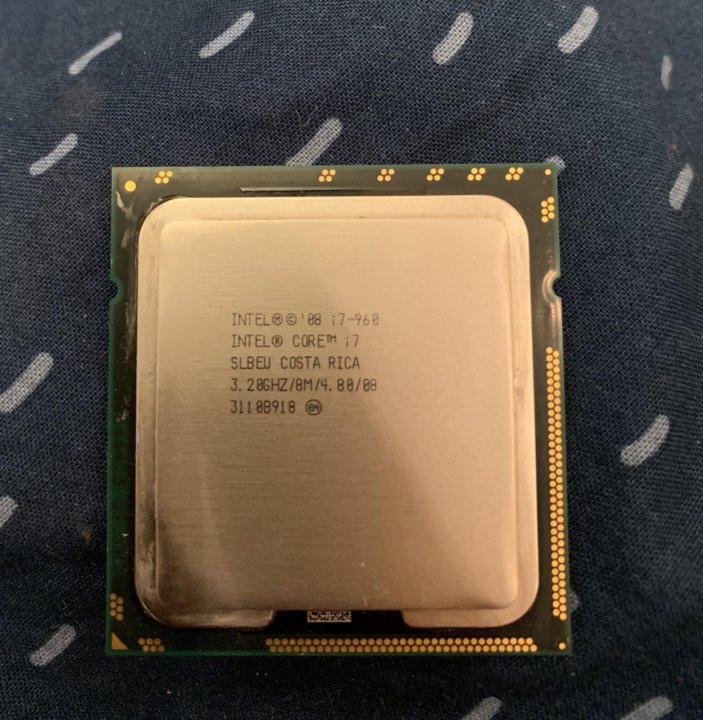 33GHz 33GHz |
6.4GT/s | 8MB | List |
| Core i7 | i7-970(B1) | Gulftown | 3.20GHz | 4.8GT/s | 12MB | List |
| Core i7 | i7-965 | Bloomfield | 3.20GHz | 6.4GT/s | 8MB | List |
| Core i7 | i7-960(D0) | Bloomfield | 3.20GHz | 4.8GT/s | 8MB | List |
| Core i7 | i7-950(D0) | Bloomfield | 3.06GHz | 4.8GT/s | 8MB | List |
| Core i7 | i7-940 | Bloomfield | 2.93GHz | 4.8GT/s | 8MB | List |
| Core i7 | i7-930(D0) | Bloomfield | 2.80GHz | 4.8GT/s | 8MB | List |
| Core i7 | i7-920(D0) | Bloomfield | 2.66GHz | 4.8GT/s | 8MB | List |
| Core i7 | i7-920 | Bloomfield | 2. 66GHz 66GHz |
4.8GT/s | 8MB | List |
|
Woodcrest, Harpertown, Clovertown) core i7.  Designed to replace Socket 1156. Sockets 1155 and 1156 are not compatible. Designed to replace Socket 1156. Sockets 1155 and 1156 are not compatible.Also known as Socket h3. Intel Core i7 and Intel Xeon processors. Also known as Socket B Socket 1366 and also known as Socket R. 4-channel memory mode is used. There is no integrated graphics. Released in 2011 Haswell (and its successor Broadwell). Not compatible with Socket 1155. Also known as Socket h4. Processors under Socket 1150 — with 2 or 4 cores. One of the major innovations in the Haswell microarchitecture is this is a new graphics core with support for DirectX 11.1, OpenCL 1.2 and OpenGL 4.0. Intel Rapid Storage Technology, Intel Clear Video Technology, and Intel Wireless Display Technology. 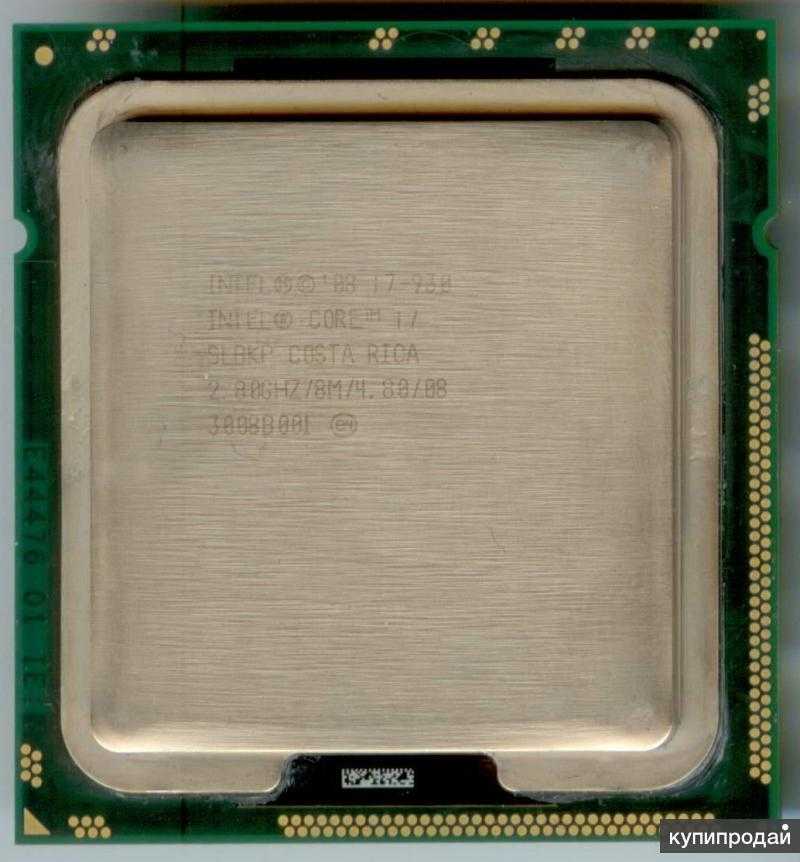 These processors require a motherboard with a 300-series chipset and an updated version of LGA 1151.v2. The 7th generation Skylake and Kaby Lake processors do not work with LGA 1151.v2. This fact was refuted by enthusiasts from China, who modified the BIOS microcode and launched 7th generation processors on motherboards with a 300 series chipset. and 8th generation processors — on motherboards with a 100 series chipset. as a replacement for the LGA 2011/2011-3 socket (Socket R/R3) for high-performance desktop PCs based on the Basin Falls platform (X299 chipset).  Super Socket 7 — analogue of Socket 7, but with support for 100 MHz bus frequency correctness of data read from memory (ECC). 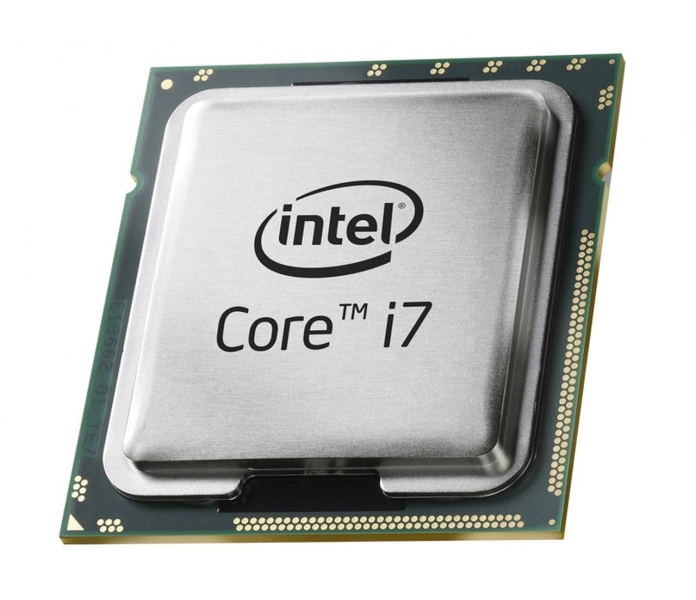 2004 2004 cores Windsor and Brisbane), Athlon 64 FX, Athlon 64 and Sempron. 2006 (2007) Phenom II X4, Sempron 140. Socket-AM3+ is an updated version of Socket-AM3. Socket-AM3+ is fully compatible with AM3 processors. Socket-AM3 motherboard will require BIOS update when working with AM3+ processors Socket-AM3+ supports power saving mode. The Socket-AM3+ case is black, the Socket-AM3 case is white. AM3 released in 2009AM3+ — in 2011. It is a ZIF connector with 905 pins, which is designed for the installation of processors in PGA-type cases. 2011. development of the FM1 socket, it is not backwards compatible with it. 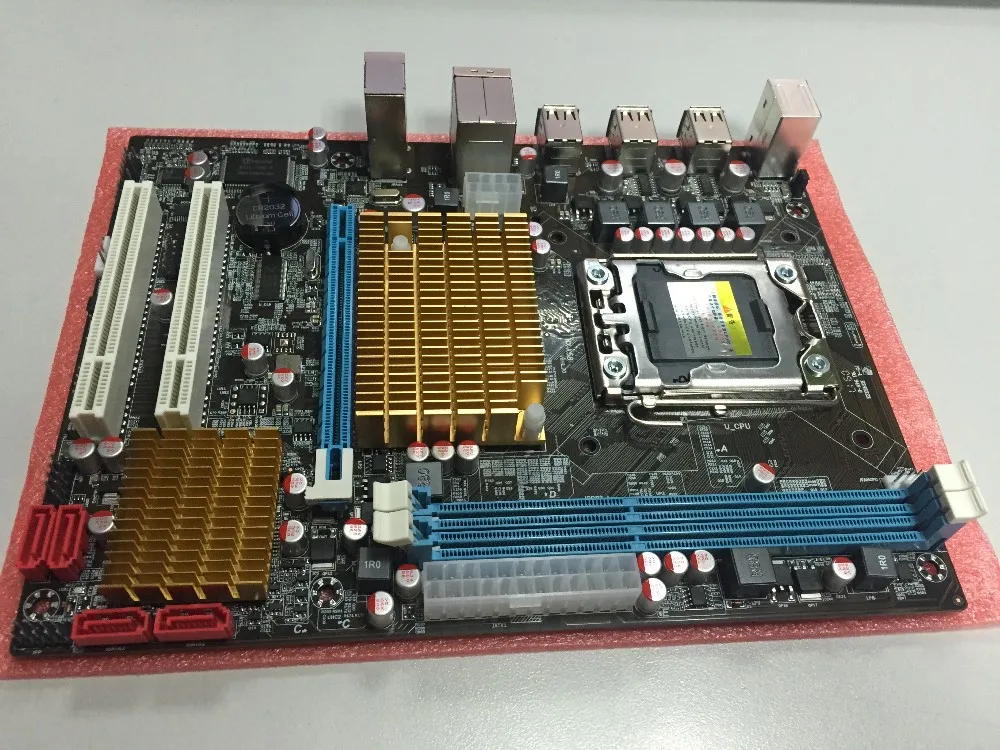 Structurally, it is a ZIF connector Structurally, it is a ZIF connectorfrom 904 pins, which is designed for installing processors in PGA-type cases. Structurally, it is a connector with 1331 pins, which is designed for installing processors in PGA-type cases. The physical dimensions of both sockets are identical. Highly optimized heat dissipation and requires the use of new cooling systems, or at least new mounts for existing ones. 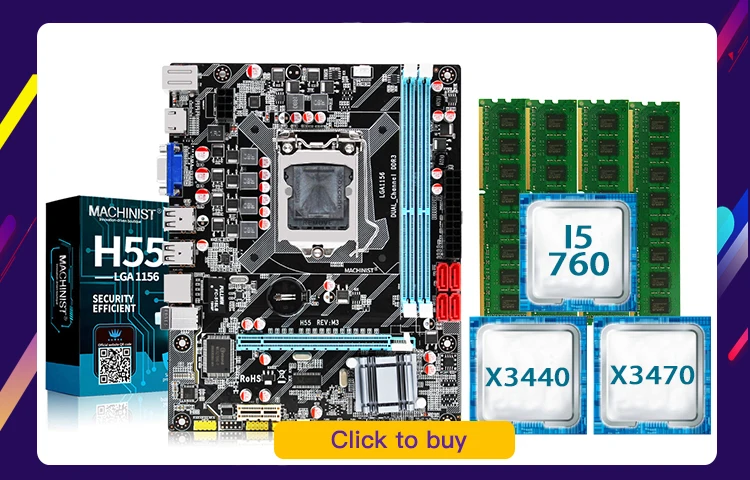 2019. 2019.
In addition to this material: List
|
is LGA1366 still alive after 12 years? GECID.com.
::>Processors
>2022
> Intel Core i7-980X test in 20 games in 2022: is LGA1366 alive after 12 years?
05-04-2022
12 years have passed since the release of the 12-thread Core i7-980X Extreme Edition. Is he still alive and moving, at least after overclocking? Now let’s check how well it carries current blockbusters paired with a top-end video card. And does it suffer without the support of AVX instructions?
The idea for this material came about by chance. Reviewing the boards in our iron bins, we stumbled upon the once top-end MSI Big Bang-XPower. In the early 1910s, we assembled a powerful stand for testing video cards on its basis, and successfully used it for several years.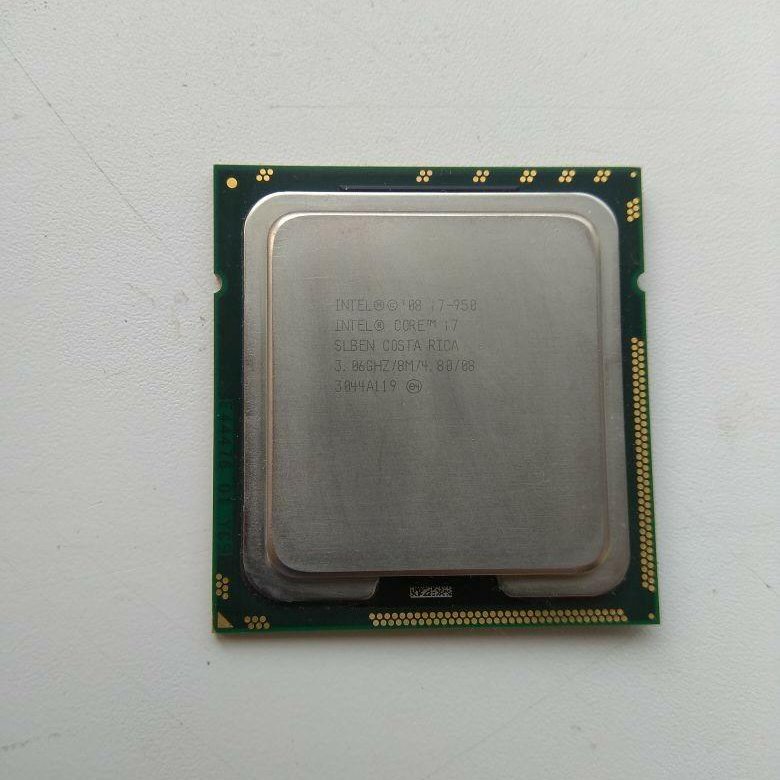 Then more powerful platforms came out, the stand served for another five years to compare the power consumption of video cards, and then it was finally retired.
Then more powerful platforms came out, the stand served for another five years to compare the power consumption of video cards, and then it was finally retired.
But in today’s realities, many are looking at such “pensioners”. For example, a brand new 6-core processor from AMD or Intel will now cost at least $150. And for the Core i7-980X Extreme Edition on eBay they ask from $90 with free shipping. You may find it even cheaper at local flea markets. So we wondered if it was possible to pair it with an up-to-date video card and how well does such a bundle cope with modern blockbusters?
First, let’s have a brief historical background. In the desktop segment, the Socket LGA1366 platform replaced the LGA775 in 2008, and three years later it was replaced by the LGA2011. The first to debut in its composition were 4-core processors, and then 6-core 12-thread ones appeared.
But a large, by the standards of 2010, the number of cores is not their only advantage. First, LGA1366 chips have moved to a modular design, making it easier for engineers to scale and configure their designs.
First, LGA1366 chips have moved to a modular design, making it easier for engineers to scale and configure their designs.
Secondly, a new QPI bus was used to exchange information between the cores. Also remember the following points:
- DDR3 RAM controller taught to work in single, dual and three-channel modes
- Hyper-Threading technology brought the number of threads to 12, and Turbo Boost made it possible to dynamically accelerate the frequency of cores
- added support for SSE4.2 instructions
- in the structure of the processors included a special block for increased energy efficiency
The only thing missing is support for AVX instructions, which may be important for some games.
Now let’s run through the test bench. It is based on a 6-core 12-thread Core i7-980X Extreme Edition . Its base frequency is 3.33 GHz. Dynamically, it rises only to 3.6 GHz, but due to the unlocked multiplier, the processor can be accelerated more. It also has 12MB L3 cache and a 3-channel DDR3-1066 memory controller. The thermal package is an impressive 130 watts.
It also has 12MB L3 cache and a 3-channel DDR3-1066 memory controller. The thermal package is an impressive 130 watts.
Naturally, we are more interested in the capabilities of the processor, so there should not be an emphasis on the video card. The top-end SAPPHIRE Radeon RX 69 helped with this.00 XT NITRO+ SE GAMING OC with factory overclocked GPU and 16 GB VRAM. Thanks to the TELEMART store for it. It has a wide selection of pre-built PCs and laptops, products for gamers and components for self-assembly of the system. There is also a handy configurator. And if you can’t do it yourself, then technical support will always help.
All components are conveniently placed on the MSI Big Bang-XPower motherboard. It supports memory overclocking up to 2133 MHz, if you’re lucky, and provides six PCIe 2.0 x16 slots for graphics cards and other expansion cards.
Finally, the 2-section dropsy NZXT Kraken Z63 will work to its full potential. It supports new and legacy Intel platforms. Two 140mm fans are responsible for active heat dissipation. And on the water block there is a screen for monitoring the current temperature of the processor.
It supports new and legacy Intel platforms. Two 140mm fans are responsible for active heat dissipation. And on the water block there is a screen for monitoring the current temperature of the processor.
16 GB of RAM was implemented using two 8 GB kits DDR3-2400 TwinMOS TwiSTER and GOODRAM LEDLIGHT . Three modules were installed in 3-channel mode, and the fourth was added to them, because 12 GB will not be enough for some modern games.
There are no M.2 slots on the board, so we took a couple of terabyte 2.5-inch SATA SSD GOODRAM IRDM PRO for OS and games. Their endurance reaches 870 TB, which allows you to record 470 GB of data every day for 5 years.
The overclocked processor and video card combination consumes more than 500 watts. Therefore, the «platinum» source Seasonic Prime PX-850 at 850 W will not be superfluous. A quiet fan, top-end circuitry, a full list of protections and a 12-year warranty inspire confidence in its reliable operation.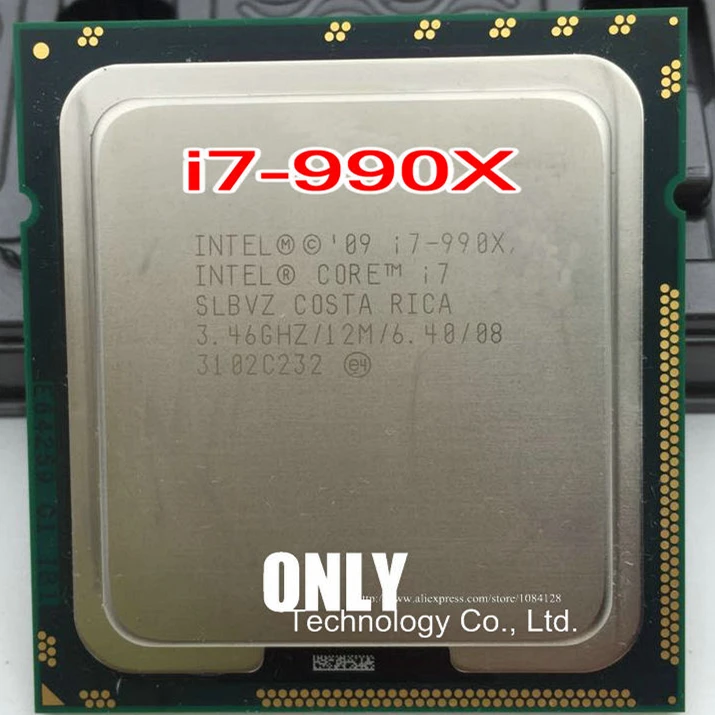
320mm graphics card and 280mm CBO will not fit in all cases. But with LIAN LI LANCOOL II White there were no problems. It supports graphics cards with a length of 383 mm and three-section CBO. Excellent ventilation and three 120mm turntables in the kit promise a comfortable temperature inside.
Traditionally, we use more affordable peripherals in retro hardware tests. In this case it is a set Defender Target MKP-350 . It includes a membrane keyboard with a classic layout, bright backlighting and a small palm rest. A mouse with an optical sensor at 3200 DPI and five programmable buttons with a scroll wheel. A mat with a smooth top surface for fast and precise mouse movement. And a closed-back headset with 40mm drivers, an external microphone on the boom and a soft landing on the head.
Philips Brilliance 329P9H monitor helped to see everything. Gameplays are recorded by an external system with AVerMedia Live Gamer 4K without loss of performance.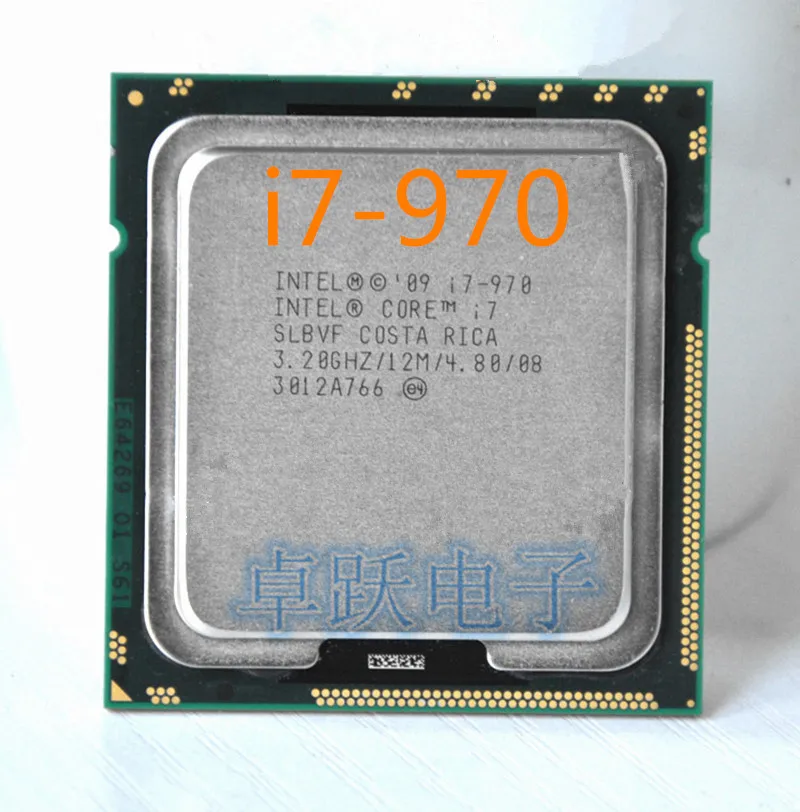
|
Configuration |
Description |
|
Processor |
Intel Core i7-980X Extreme Edition |
|
Motherboard |
MSI Big Bang-XPower |
|
Cooling system |
NZXT Kraken Z63 |
|
RAM |
TwinMOS TwiSTER 2x DDR3-2400 4GB GOODRAM LEDLIGHT 2x DDR3-2400 4GB |
|
Video card |
Sapphire Radeon RX 6900XT NITRO+ SE |
|
Power supply |
Seasonic Prime PX-850 |
|
Housing |
LIAN LI LANCOOL II White |
|
Accumulator |
GOODRAM IRDM PRO 1TB x2 |
|
Periphery |
Defender 4 in 1 Target MKP-350 |
|
Monitor |
Philips Brilliance 329P9H |
The first thing after the assembly, we checked the stability of the system at nominal, ran several benchmarks for further comparison and overclocked the processor and memory.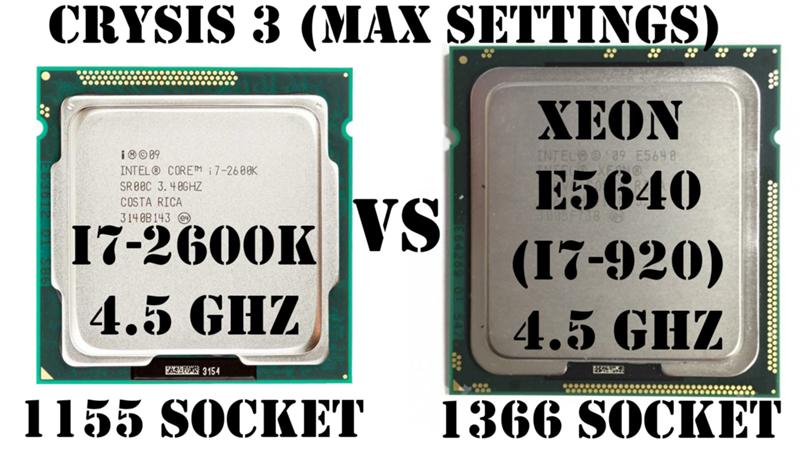 The first was accelerated, as if “permanently”, up to 4120 MHz with a penny, raising the multiplier to 31, the CPU Voltage to 1.356 V and the QPI Voltage to 1.36 V.
The first was accelerated, as if “permanently”, up to 4120 MHz with a penny, raising the multiplier to 31, the CPU Voltage to 1.356 V and the QPI Voltage to 1.36 V.
RAM overclocked to 1866 MHz with CL9 timings and a voltage of 1.65 V. If we had all the same modules, we might have taken 2133 MHz, but thanks for that.
After that, the system was again checked for stability. Running the AIDA64 stress test warms up the processor cores to a maximum of 73°C. The critical temperature Tcase for it should not exceed 68°C, but there was no throttling according to the monitoring.
If FurMark is added, the GPU warms up to 69°C The temperature of the processor cores almost does not change due to the excellent ventilation of the case.
All preparatory questions are over — let’s move on to the tests. To begin with, a small block for comparing systems at nominal and overclocked.
Acceleration of RAM from 1066 to 1866 MHz increases read, write and copy speeds in AIDA64 by at least 47%.
Access delay is reduced by 20%.
In purely processor benchmarks, the bonus from the increase in the frequency of the Core i7 is not so big, but still noticeable. For example, in single and multi-threaded mode CPU-Z it is in the region of 20%.
In CineBench R15 , the CPU score is improved by 21%, and the result in OpenGL after overclocking is 25% higher.
Multi-threaded performance in the CineBench R23 increased by 28% due to overclocking.
3DMark Time Spy not only improved the CPU by 23%, but also increased the result of the graphics subsystem by 13%. And the overall figure increased by 17%.
And in the complex PCMark 10 we fix a bonus of 13-28% according to various tests.
On average, overclocking improved the results of synthetic tests by 28%. Let’s see what we get in games.
Assassin’s Creed Valhalla runs comfortably even at the highest settings. But after overclocking, the performance increases by 22-31%, which provides an even more enjoyable gameplay.
But after overclocking, the performance increases by 22-31%, which provides an even more enjoyable gameplay.
At Days Gone, had a slight jelly feel at par. Overclocking removed it, and at the same time improved the statistics by 30-50%.
DOOM Eternal was flying even at par with an absolute nightmare. You can’t find fault with the management, and the video card loading floated within 40-70%. After overclocking, the load on the GPU increased to 60-90%. Performance bonus reached 43%.
The Forza Horizon 5 can be ridden at par at a high preset. Overclocking raises all stats by 39-49%. With such a bonus, you can storm the ultra preset, especially if you add more RAM.
And finally, in The Third Witcher , with maximum graphics presets and post-processing in the city, it’s hard to run at par. Sometimes the stators slip. Life-giving acceleration removes all unpleasant moments and improves performance by at least 30%.
Life-giving acceleration removes all unpleasant moments and improves performance by at least 30%.
On average, overclocking raises all statistics by 30-50%. Sometimes, as in the case of Days Gone, it also increases the responsiveness of the controls. Therefore, all the following games were run on the system in overclocking, especially since it is available to varying degrees to all owners of motherboards based on the X58 chipset.
In Dota 2 boldly turn all the settings to the maximum. No matter how many opponents come together in battle, no matter what effects and spells are used, the video sequence remains smooth and the controls are responsive.
In World of Tanks on ultras, you can choose any tanks, any mode and any maps — the comfort of the gameplay will not suffer from this. In a regular random house, we got an average of 140 frames / s. There was not even a hint of dullness or jelly in the management.
Surprisingly, the ARK is a pleasure to run with the epic graphics preset. “Where wild animals roam, in the thicket of the forest, in a dark cave,” the average speed is kept above 90 frames / s. Small stators sometimes slip, possibly due to low RAM bandwidth. Otherwise, no problem.
Almost maximum settings do not spoil the impressions of RUST either. Stators appear only in the case of a thoughtless run in an unknown direction. And if you play within a certain location, then everything is smooth and pleasant, with an average speed of 70 FPS.
CS: GO with bots on the minimum eSports settings is given to the system easily and naturally. Smoke and fire effects do not cause any subfreeze. The average speed rises above 200 fps.
In Rainbow Six Siege everything is fine with ultra preset with native 50% render scale. In operations, the rate of very rare events does not fall below 90 fps. You can’t look at other statistics.
PUBG on ultra settings upsets a small Input lag in control and stators. Although, if you wish, you can play and win, especially in duels with less experienced opponents. The frame rate averages over a hundred frames / s.
If you lower the settings a little and reduce the load on the system, then the jelly in the control disappears. But blunting from time to time appear. But it’s more fun to play this way. You can even on a high-frequency monitor.
With Fortnite turned out to be interesting. With an average preset, the average speed reaches 90 frames / s. It would seem that everything is fine, but the statistics of very rare events drops below 20 FPS and microfreezes are periodically felt.
You won’t be able to overcome them with a low preset. Yes, the average speed rises to 150 fps and rare events statistics improve by more than 50%, but microfreezes do not completely disappear. The situation improves only when vertical sync is enabled.
In Apex Legends , the choice of optimal parameters was shifted to the engine. He chose almost all the maximum settings, and we never regretted it. The picture is beautiful, the video sequence is smooth and the control is very comfortable.
Pleasantly surprised Halo Infinite . In a match with bots that create an additional load on the processor, it ran great except for the first few minutes. The initial loading of objects was accompanied by subfreezes, but then they completely disappeared, and the 0.1% Low indicator did not fall below 40 FPS.
StarCraft II: Legacy of the Void relies more on single-threaded rather than multi-threaded performance. Therefore, in a scenario with a large cluster of units, I had to go down to the average preset in order to get rid of noticeable framerate drops. This did not save from the stators, but in general you can play.
In GTA V all settings were turned to maximum except MSAA. The greatest load on the processor is observed in the city, so we didn’t even go to the grass. On average, the frame rate was around 60 FPS. There were no frame skips or other problems.
For Red Dead Redemption 2 we chose the maximum version of the “quality” preset. Here we are again more interested in the situation in the city, where the load on the processor is higher. And what do we see? More than 80 fps on average, no dips in the rest of the statistics and no problems with control.
If you wish, you can even play Cyberpunk 2077 . True, it is better to immediately go down to a low preset, since the spread of the current speed is very large. In some locations we get about 90 fps, and in others — less than 40, and even with a little jelly in control.
Finishing the test session in God of War . At the maximum preset, it was noticeably frizzy, and at a high it was already tolerable. There are no complaints about the average speed, but dulling does not completely go away. In addition, there is a small Input lag in the management.
We also wanted to add a run in Dying Light 2 , but the game just didn’t start. We received no warning from her. Perhaps she or her protection system lacked support for AVX instructions.
Results
The 12-year-old and 12-thread Core i7-980X Extreme Edition surprised us. If you pair it with a powerful modern video card, 16 GB of RAM and an SSD, then even without overclocking it can run almost any game.
Overclocking CPU and RAM improves performance by an average of 28% in synthetics and by 30-50% in games.
Simple online projects and many hits of the past can be safely run on ultras.
